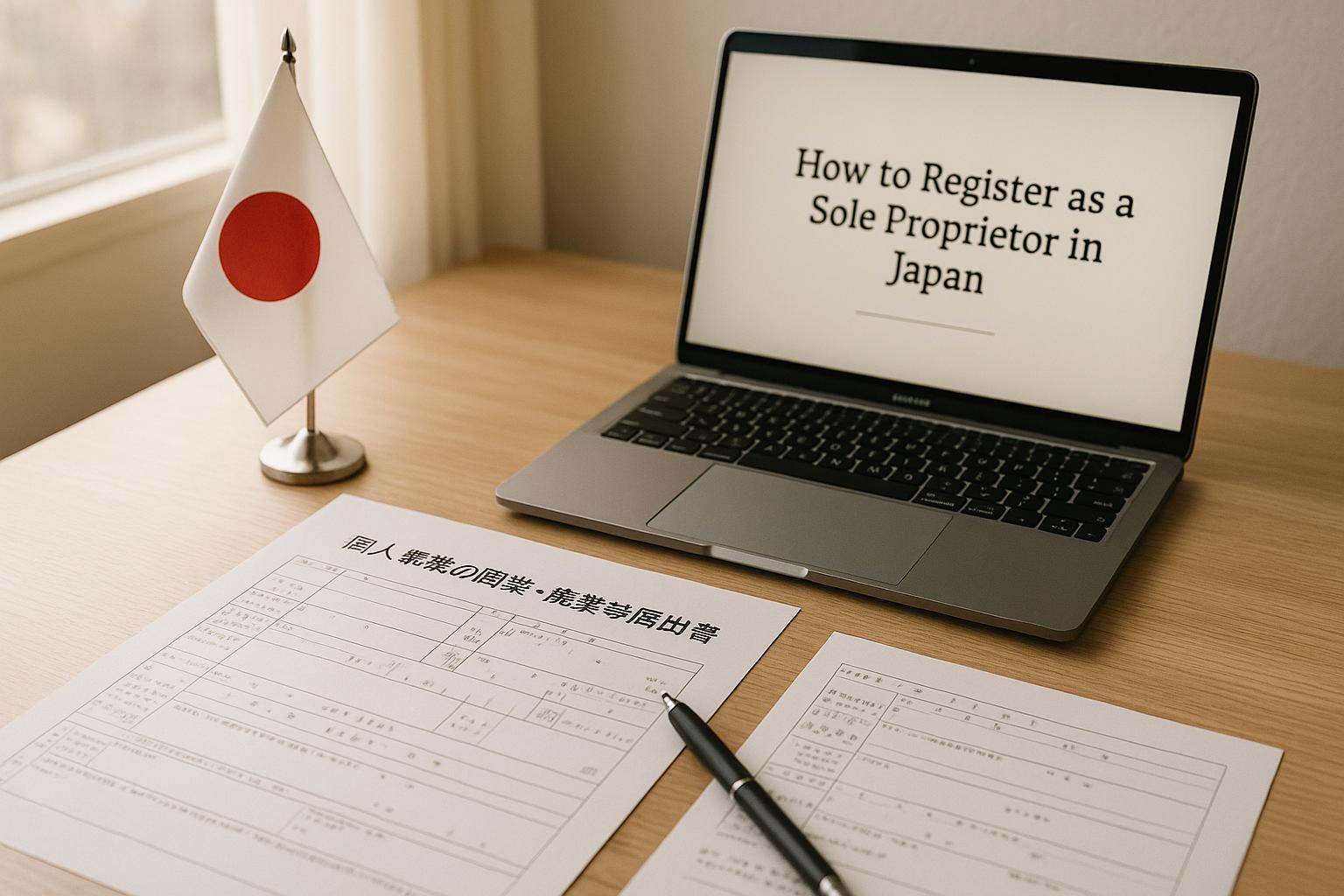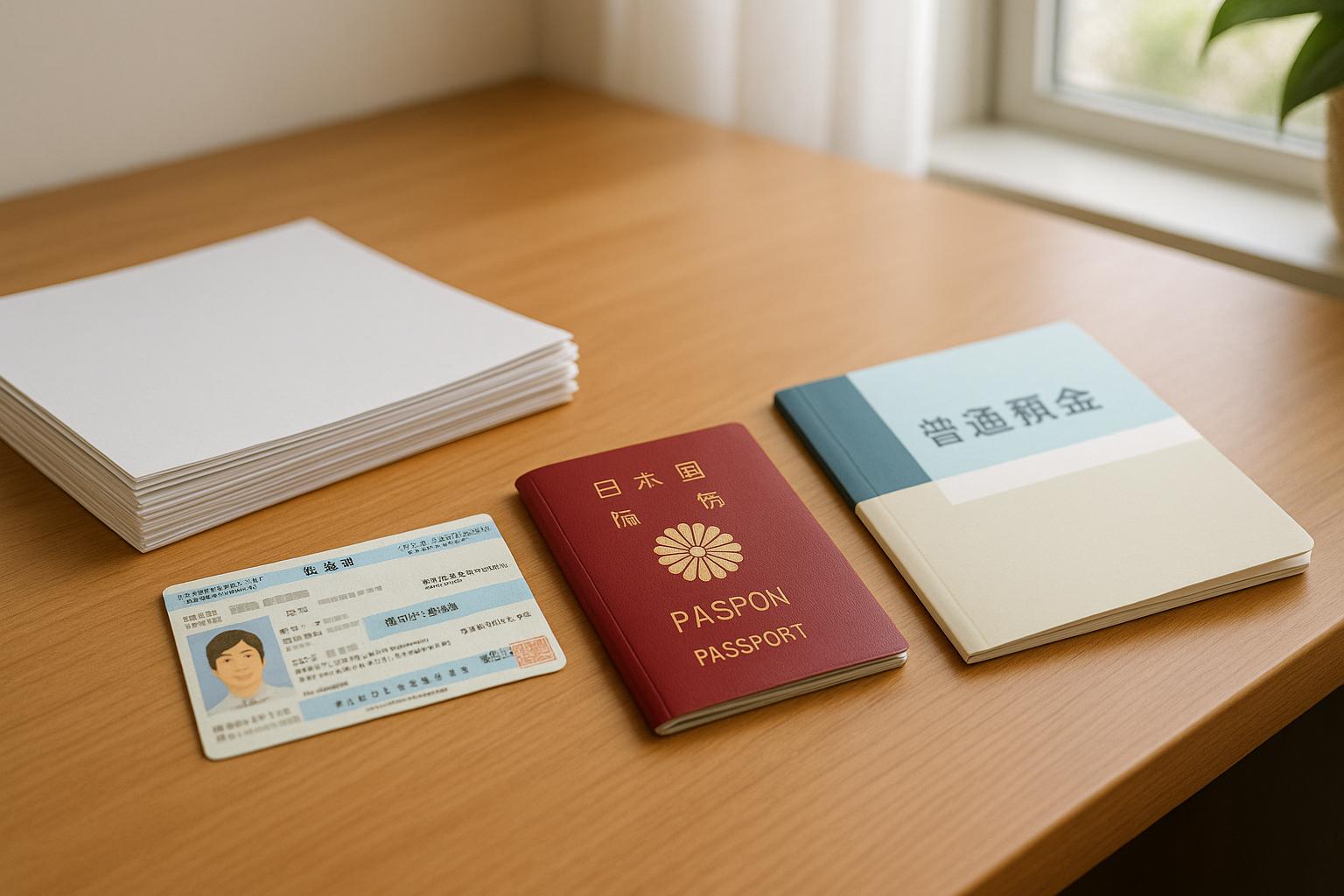Navigating prenatal care in Japan as a foreigner can be challenging, but with the right information, it becomes much easier. Here's a quick guide to help you:
- Start Early: Register your pregnancy at your local ward office to get the essential Maternal and Child Health Handbook (Boshi Kenko Techo) and prenatal check-up vouchers.
- Choose the Right Provider: Use platforms like Myjin to find clinics or hospitals with English-speaking staff and experience working with international patients.
- Understand the System: Prenatal care in Japan follows a structured schedule with regular check-ups. Expect about 14 visits throughout your pregnancy, with financial subsidies available through vouchers.
- Prepare Documents: Bring your health insurance card, residence card, passport, and any previous medical records to appointments.
- Language Support: Many local offices and community groups offer free or affordable translation services to help with medical communication.
- Types of Providers: Decide between general hospitals (best for high-risk cases), maternity clinics (more personalized care), or midwifery centers (natural birth focus).
pregnancy in Japan - overview, costs, insights for foreigners
How Prenatal Care Works in Japan
In Japan, prenatal care follows a structured approach, emphasizing regular check-ups and detailed documentation to safeguard the health of both mother and baby. These scheduled visits and thorough record-keeping form the backbone of the country's maternity care system.
Prenatal Check-Up Schedule
The Maternal and Child Health Act determines the timing and frequency of prenatal check-ups in Japan. These appointments are divided into three phases, aligning with the stages of pregnancy:
| Pregnancy Period | Weeks | Check-Up Frequency |
|---|---|---|
| Early Pregnancy | Up to 23 weeks 6 days | Once every 4 weeks (monthly) |
| Mid Pregnancy | 24–35 weeks | Once every 2 weeks (bi-weekly) |
| Late Pregnancy | 36 weeks until delivery | Once a week |
From around the 8th week of pregnancy, expect to attend approximately 14 check-ups by the time of delivery. These visits include various tests and examinations to monitor both maternal health and the baby’s development.
Equally important is the documentation process, which is where the Maternal and Child Health Handbook plays a vital role.
Maternal and Child Health Handbook (Boshi Kenko Techo)
The Maternal and Child Health Handbook is an essential tool throughout pregnancy and beyond. After registering your pregnancy at the local ward office or city hall, you’ll receive this bilingual handbook. It serves as a comprehensive record of medical history, test results, and vaccination details. During every prenatal visit, healthcare professionals update the handbook, ensuring continuity of care. What’s more, it remains useful even after birth, tracking your child’s health and development through early school years.
Financial Support for Expectant Mothers
Japan eases the financial burden of prenatal care through local government programs. One of the most common forms of assistance is prenatal check-up vouchers, which typically cover 14 to 16 visits. These vouchers, provided alongside your Maternal and Child Health Handbook when you register your pregnancy, outline the tests and services they cover. Discounts are automatically applied during appointments, making prenatal care more accessible for expectant mothers.
Required Documents and Registration Steps
If you're a foreign resident in Japan, there are a few administrative steps and documents you'll need to prepare for your first prenatal visit and to register your pregnancy.
Documents Needed for Prenatal Appointments
When attending your first prenatal appointment, make sure to bring these essential items:
- Health insurance card: This covers most medical services in Japan. However, it's worth noting that pregnancy tests aren't covered by insurance. A clinic test typically costs around ¥10,000–20,000, while home pregnancy kits start at about ¥2,000.
- Residence Card: This serves as your primary ID in Japan and must be carried at all times.
- Passport: A secondary form of identification.
- Previous medical records: If you have past medical records, especially translated copies, bring them along. These will help your new healthcare provider better understand your medical history.
Registering Your Pregnancy at the Ward Office
After your doctor confirms your pregnancy, you'll need to register it at your local municipal or ward office. Here's what to bring to complete the process:
- A valid form of identification, such as your Individual Number (My Number) Card or passport.
- Your Residence Card.
- The clinic card or certificate provided by the hospital or clinic confirming your pregnancy.
At the ward office, you'll fill out a pregnancy notification form. If you haven't already, you can obtain your Individual Number Card after completing residential registration at your local administrative office.
Once registered, you'll receive two important items:
-
Maternal and Child Health Handbook: This handbook is a vital record that tracks the health of both mother and baby throughout pregnancy, delivery, and beyond. It also documents the baby's growth, health status, and vaccinations. The handbook is available in multiple languages, including English, Chinese, Korean, Portuguese, and more. Be sure to request a version in your preferred language at the municipal office.
"The Maternal and Child Health Handbook is a vital record that continuously tracks the health of both mother and baby from pregnancy to delivery. It also records the baby's growth, health status, and vaccinations after birth. This handbook is essential for ensuring the health and well-being of both mother and child, so it's important to keep it in a safe place. Handbooks are also available in various foreign languages. If you want one, please inquire at your local municipal office."
- Coupon booklet: This provides subsidies for up to 14–16 prenatal check-ups.
You'll also receive a maternity badge, which you can wear in public spaces to signal your pregnancy. This badge is especially helpful on public transportation, as it encourages others to offer you a seat or assistance.
Communicating Medical Needs and Preferences
It's important to communicate your medical needs and preferences clearly with your doctor. Begin by discussing any protocols or practices you're familiar with from your home country to tailor your care plan.
If language barriers are a concern, consider arranging professional translation services for critical appointments. Many local offices and community organizations provide language support. Additionally, local health centers often offer free counseling services with midwives or specialists, and these services frequently include language-friendly options. Public health nurses are also available to provide advice on pregnancy and childbirth.
To avoid miscommunication, prepare written questions and birth preferences in both English and Japanese. This approach ensures your needs are effectively communicated and understood.
Finding Foreigner-Friendly Clinics and Hospitals
Once you've registered, the next step is finding a healthcare provider who matches your language preferences and care requirements. Your earlier preparation and documentation will make this process smoother.
Using Myjin to Find Prenatal Care Providers

A great resource for locating foreigner-friendly clinics is Myjin (https://myjin.jp). This platform offers a curated list of gynecologists and general clinics that often provide prenatal care. Each listing includes key details like the clinic's official website, contact information, and directions, making it easier to find a provider that suits your needs.
What to Look for in Clinics
Choosing the right prenatal care provider is crucial. Here are a few factors to keep in mind:
- Experience with international patients: Clinics that frequently work with foreigners are more likely to understand different cultural perspectives and provide tailored care.
- English-language materials: Look for clinics offering translated consent forms, pregnancy guides, and post-appointment summaries in English. These materials can help you stay informed and engaged in your care.
- Location and services: Accessibility is key - choose a clinic that's easy to reach via public transport. Also, confirm whether they handle deliveries or will refer you to a hospital for childbirth.
How to Contact Clinics Properly
Making a good first impression and ensuring clear communication can go a long way. Here’s how to approach this:
- Call ahead: Confirm if the clinic has English-speaking staff. Speak clearly and ask about language support, scheduling, insurance, and emergency procedures.
- Send an email: If you're more comfortable writing, email the clinic. This allows staff to use translation tools or consult English-speaking colleagues. Be sure to include your estimated due date, insurance details, and any specific language needs.
- Follow local etiquette: Be polite and punctual for appointments. If a clinic cannot meet your requirements, thank them for their time and ask if they can recommend another provider.
Finding the right clinic may take some effort, but with the right approach and resources like Myjin, you’ll be better equipped to navigate prenatal care in Japan.
sbb-itb-cbc0cbb
Types of Prenatal Care Providers in Japan
Expectant mothers in Japan have three primary options for prenatal care: general hospitals, maternity clinics, and midwifery centers. Each offers distinct advantages, and the right choice often depends on your specific needs and preferences.
Hospitals vs. Maternity Clinics vs. Midwifery Centers
Choosing between these providers comes down to the type of care you’re looking for, the level of medical support you might need, and whether language assistance is a priority. Here's a quick breakdown:
| Provider Type | Pros | Cons | English Support |
|---|---|---|---|
| General Hospitals | Comprehensive care with specialists and emergency services | Less personalized care and longer wait times in larger facilities | Varies - larger hospitals are more likely to offer international services |
| Maternity Clinics | Personalized care in comfortable settings | Limited emergency services; may require hospital transfer for complications | Often limited, though some cater specifically to international patients |
| Midwifery Centres | Family-focused care emphasizing natural birth | Not suitable for high-risk pregnancies; fewer medical intervention options | Generally limited |
General hospitals are ideal for high-risk pregnancies or those needing specialized medical attention. Maternity clinics provide a more personalized experience, while midwifery centers focus on natural birth in a family-oriented environment. Your choice may also depend on additional services and support options.
Special Features and Services
Many prenatal care providers in Japan go beyond routine check-ups, offering services that can make the journey to parenthood smoother and more comfortable:
- Language and Cultural Support: Some facilities provide multilingual Maternal and Child Health Handbooks and employ bilingual staff, making it easier for non-Japanese speakers to navigate care.
- Financial Assistance: Prenatal check-up coupons from your local ward office can significantly reduce routine appointment costs, and the lump-sum birth allowance of ¥500,000 (as of April 2023) may be paid directly to hospitals. Additional support may be available for low-income households to help with prenatal expenses.
- Post-Birth Support: Many facilities collaborate with local ward offices to arrange home visits by midwives or nurses after delivery. Programs like "Hello Baby" offer guidance, and in some areas, extended post-birth care is available through services like Support Hotels or Sanba Centers, which provide medical, nutritional, and emotional care.
- Prenatal and Parenting Education: Classes on childbirth preparation, newborn care, and breastfeeding techniques are often available. Look for options that include language-friendly instruction or translation services if needed.
- Specialized Care Approaches: Some providers focus on natural birthing techniques, while others emphasize medically managed care. Understanding their philosophy can help you find a provider that aligns with your preferences.
- Convenience Features: Services like Maternity Badges (Ninshin Wakarimashita) can signal your pregnancy in public spaces. In some areas, "Priority Taxis for Pregnant Women" are available for emergencies, and your provider can guide you on accessing these resources.
With a variety of options and services, Japan’s prenatal care system offers flexibility to meet the diverse needs of expectant mothers.
Support Resources for Expectant Foreigners
Navigating pregnancy in Japan as a foreigner can feel overwhelming, but there are plenty of resources to help you along the way. From community networks to government programs, support is available to ensure you receive proper care and guidance.
Community Support and Language Services
Local community groups and online forums are a lifeline for many foreign residents. These spaces are filled with shared experiences and practical advice from others who’ve been through Japan’s healthcare system. Whether it’s tips on finding prenatal care or navigating cultural differences, these networks can be incredibly helpful. They also often provide language support, making it easier to understand your options and plan for a smooth pregnancy.
On top of that, government resources play a crucial role in simplifying access to care and financial assistance, ensuring that you’re not left in the dark.
Government and Public Health Resources
The Japanese government offers various services to support all expectant residents, regardless of nationality. Start by registering your pregnancy at your local public health center or ward office. These offices provide multilingual assistance, so even if Japanese isn’t your first language, you’ll have access to clear and helpful information.
If you’re enrolled in Japan’s national health insurance, you’re eligible for a birth allowance of ¥500,000 to help cover delivery costs. For those facing financial or social difficulties, additional support is available through the Hospitalisation Assistance Policy Programme under the Child Welfare Act.
To make things even easier, Myjin offers a directory of government offices and public health centers with English-speaking staff. They also provide step-by-step guides to help you navigate insurance claims and understand the financial aid options available to you.
Conclusion: Making Prenatal Care Access Easier in Japan
Navigating prenatal care in Japan doesn’t have to be overwhelming if you know where to start. While language barriers at many healthcare facilities can pose challenges, being prepared and informed can make the journey much smoother. Taking the time to understand how the system works will help you make confident decisions about your care.
Begin early by registering your pregnancy at your local ward office and obtaining your Maternal and Child Health Handbook. Keep in mind that Japan’s healthcare system is structured differently from some other countries - you’ll go directly to specialists rather than through a general practitioner. Familiarizing yourself with this system ahead of time can help avoid unnecessary confusion.
Finding clinics with English-speaking staff can also make a significant difference. Platforms like Myjin simplify this process by providing a curated list of prenatal care providers who are experienced in working with foreign patients. Instead of spending hours contacting clinics and facing language hurdles, you can focus on facilities that are ready to meet your needs. Detailed contact information and location details on such platforms further assist in scheduling appointments and understanding the services offered.
Tap into community resources and language support services. Investing in private insurance with translation assistance or budgeting for interpreter services can be a game-changer during critical appointments. Affordable translation options are also available to help with booking appointments and handling medical documents, ensuring you’re fully prepared for any paperwork requirements.
Don’t wait to take the first step. Whether you're planning to conceive or are already expecting, start building your support network and researching healthcare providers now. With the right preparation and resources, you can create a prenatal care experience in Japan that meets both your medical and communication needs.
FAQs
What are the differences between general hospitals, maternity clinics, and midwifery centers in Japan, and how can I choose the right one for prenatal care?
In Japan, general hospitals are equipped to handle a wide range of medical services, making them a reliable choice for high-risk pregnancies or situations requiring specialized care. On the other hand, maternity clinics cater to low-risk pregnancies, offering a more personal and focused approach to prenatal care and childbirth. For those desiring a natural birth in a cozy, home-like environment, midwifery centers managed by midwives provide an excellent option with minimal medical intervention.
When deciding on the right facility, think about your pregnancy's risk level, the type of care you feel most comfortable with, and whether English-speaking staff are available. For foreigners, accessibility and services designed with non-Japanese speakers in mind are crucial. Platforms like Myjin can assist in finding facilities that meet these specific needs.
How can I communicate my medical needs in Japan if I don’t speak Japanese fluently?
If you’re not confident in Japanese, there are practical ways to make sure your medical concerns are understood. Many hospitals in Japan offer multilingual medical questionnaires, which can help you explain your symptoms more clearly. You might also find it helpful to jot down your concerns beforehand and use simple Japanese phrases or translations via apps to ease communication.
Some clinics and hospitals have English-speaking staff or provide interpretation services, so it’s a good idea to check for these options when booking an appointment. Another option is to bring along a trusted friend or hire a professional interpreter for added support. Taking these steps in advance can make your medical visit much smoother and ensure your needs are properly addressed.
What financial support is available for prenatal care in Japan, and how can I apply?
Japan offers several types of financial support to ease the costs of prenatal care and childbirth. One key benefit is the lump-sum childbirth and childcare allowance of ¥500,000, designed to help with delivery expenses. This allowance is typically handled through your health insurance provider. Additionally, many municipalities provide subsidies for prenatal check-ups, which can significantly lower the out-of-pocket costs during pregnancy.
To take advantage of these benefits, visit your local city or ward office to learn about the application process. Since most subsidies are managed through municipal programs, it’s important to register your pregnancy at your local office as early as possible. Don’t forget to bring your health insurance card and any required identification when applying.


